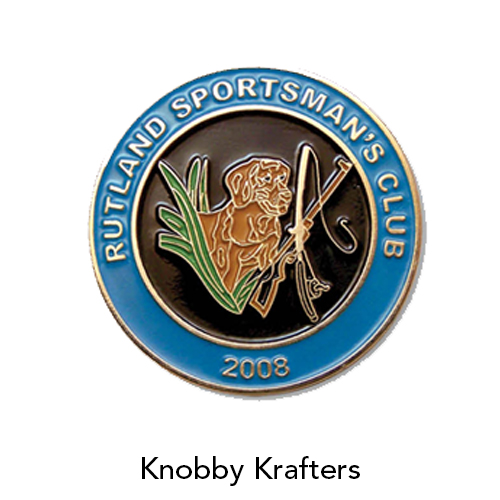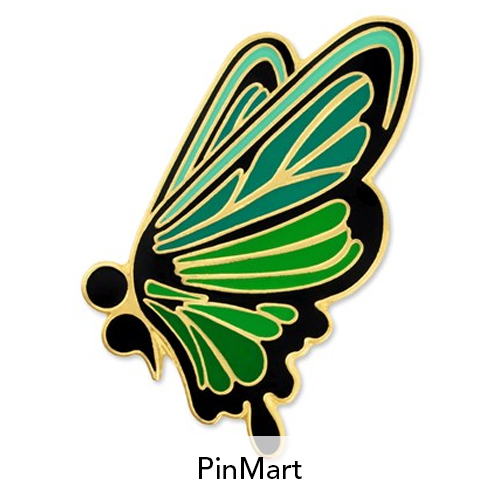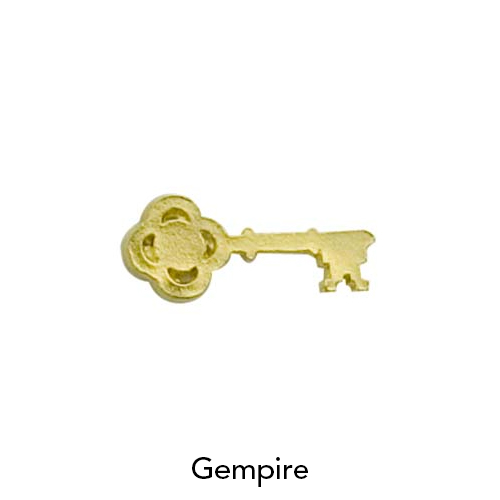Buttons and pins are typically thought of during each year’s election cycle, but they are highly relevant all year ‘round, for a wide variety of marketing communications activities.
Our industry is all about identity, and buttons and pins are one of the most obvious substrates for expression and identification that people enjoy wearing. They can be small and subtle like the size of a lapel flag pin, or a huge (six-inch diameter) button.

“There are so many longtime fans of lapel pins, whether metal or PVC,” states Mary Jo Brunell, Customer Service/Sales Manager of Knobby Krafters. “They are collectible, tradeable, inexpensive, and an easy go to giveaway at trade show or events. Your message may remain on a hat or lanyard from a trade show for years.”
Harvey Mackler, MAS of Gempire adds that pins are eye-catching and attractive, and many people consider pins to be like jewelry pieces. “They can be very colorful or an all metal finish for a jeweler’s look. And they typically are not budget busters!”
For certain clients, says Brunell, lapel pin designs can change year to year which then makes them collectible and many people look forward to getting the new year’s design. Knobby Krafters, she notes, makes many yearly pin change designs for healthcare and pharmaceutical conventions. Additionally, many tourist and visitors bureaus sell pins as souvenirs. “They order plastic lapel pins in large quantities as an inexpensive giveaway to all that come through their travel and tourism offices,” she says. “They have been used in fundraising and as thank yous for a donation. They are used all over the country for trading at various sporting events and kept as memorabilia.”
According to PinMart (www.pinmart.com), lapel pins make a great fit for a client’s fundraising initiatives as they tend to be “in good taste and provide the recipient an understated way to note pride in achievements and accomplishments. They are an effective way to raise money as donors can receive them for giving a specified amount of cash.
For awareness events, lapel pins can be suitable for the gift or “swag bags” typically distributed at charity walks and other fundraising events. Clients that support foundations and charity events can also utilize a lapel pin or button for sponsorship giveaways.
PinMart has 72 new pins, showcasing a wide variety of graphics for numerous awareness organizations and foundations, as well as travel (such as a five-pin set for New York City).

For example, PinMart’s Semicolon Butterfly Pin (# S366) is described by the company as “great for a mental health awareness campaign, as a recognition award at a meeting or a support piece on a jacket lapel.”
The company's website describes a few other uses for lapel pins as well. For example, if you have a corporate client that is planning an annual board meeting, customizing a lapel pin can commemorate the event for the president, chairperson, and other board members.
Schools and universities are also strong contenders to sell logo’ed lapel pins and buttons to show off school pride all year long. They can be customized to feature the mascot, school colors, and even graduating year.
Some pins are suitable for more than one campaign. For example, run pins from PinMart that can be given to participants in a half marathon, 5K, and 10K, are good for running clubs as well as for charities that hold these events to make money. These pins feature black running shoe prints across the metal; and each comes with two rubber backings, individually polybagged.
According to Mackler, an easy way to get started with lapel pins is with year-of-service recognition.
He advises to understand the basics of emblematic jewelry. For example, knowing the differences between types that seem almost the same, such as die struck enamel with underlying metal brass alloy and die struck enamel with underlying metal iron. Both can be plated and color filled similarly, however, iron is harder and more porous, and as a result, the raised metal that is plated can have multiple imperfections. Also, laser-fired cloisonne and a printed pin may both look very similar. If the printed pin is made with thicker metal and has a border on the front, it can feel the same as well. However, the price difference can be more than $1.00 per pin. Also be aware of the difference between gold plated vs. brass plated pins. Gold plating typically carries a surcharge while brass plating doesn’t.
When out and about take note of who is wearing custom pins and you’ll see more than you likely think. Custom lapel pins are worn by a wide range of individuals for many reasons. Pins can help your clients reinforce their brands, logos, and taglines, as well as help launch awareness of new product lines or new company. In these ways, they are prefect for trade show booth personnel.
Lapel pins serve as symbols of unity and as mementos and are typically kept for a long time. So when consulting with a client about an upcoming event, launch, or trade show, tell them to “pin it.”
CASE STUDY:

Harvey Mackler, MAS of Gempire: “A large grocery store chain uses the key pin series to reward their employees for extra service given to their customers. The first lapel pin with a blue key is presented to the employee with a printed card. The employee then proudly wears the lapel pin which often promotes conversation between customers and the employee and further encourages them to continue to provide an extra level of service. After the employee has received all five keys on the silver level, then he or she will receive the gold level lapel pin with one key, and so on. As long as that employee continues to provide an extra measure of service he or she can proceed through the various levels.”